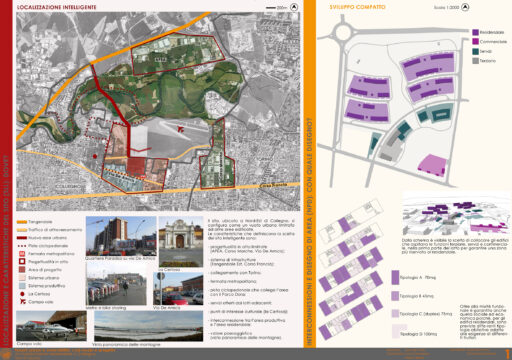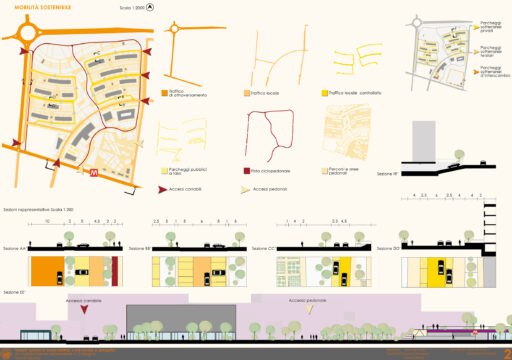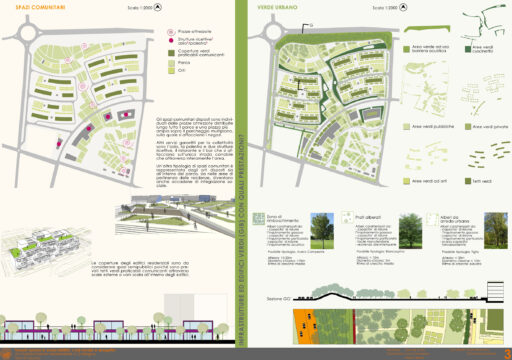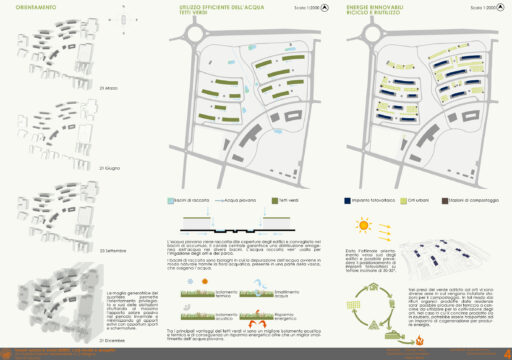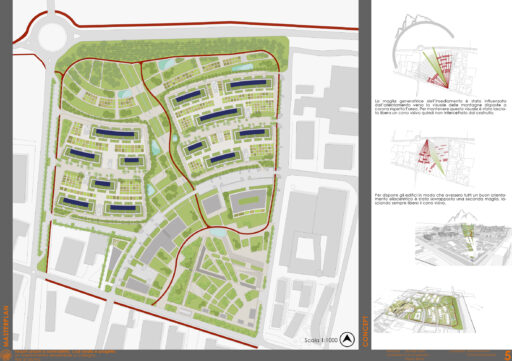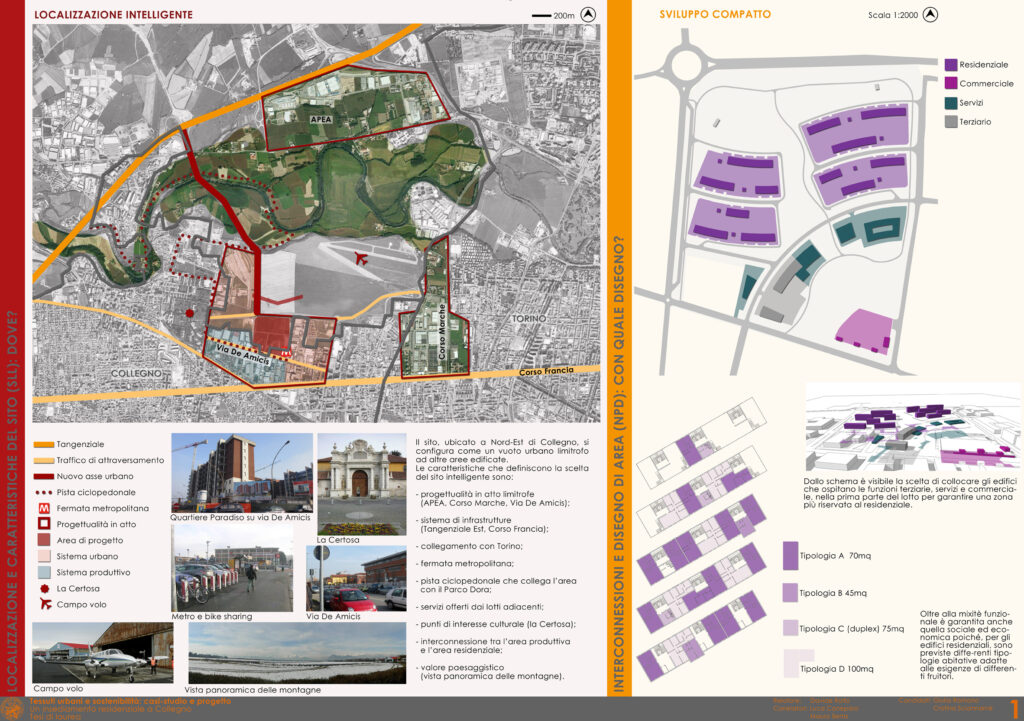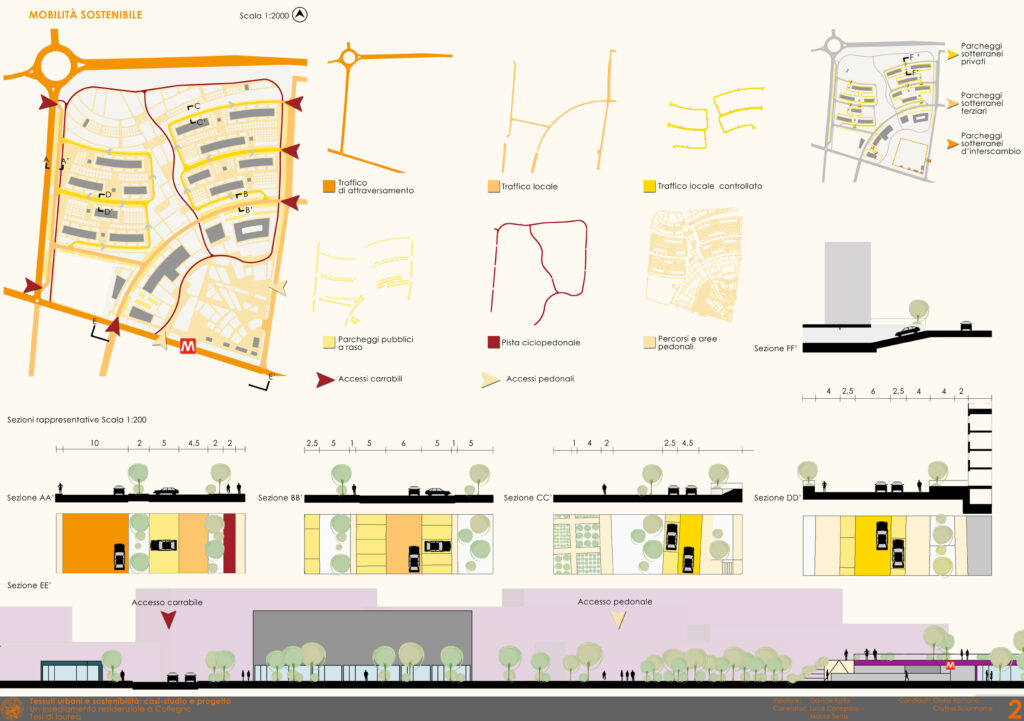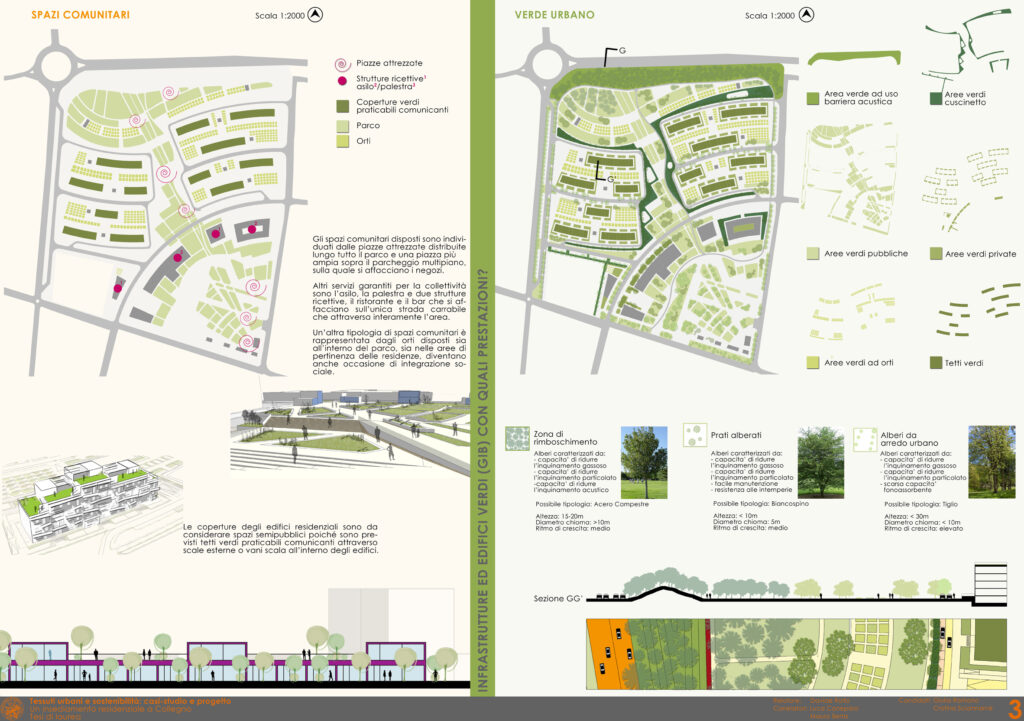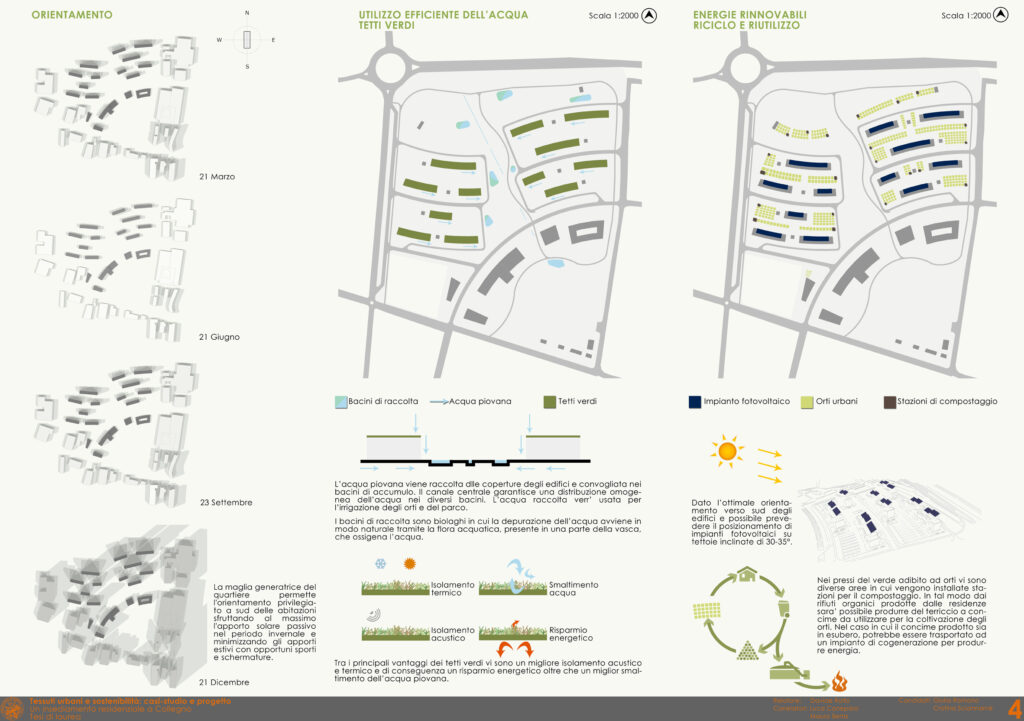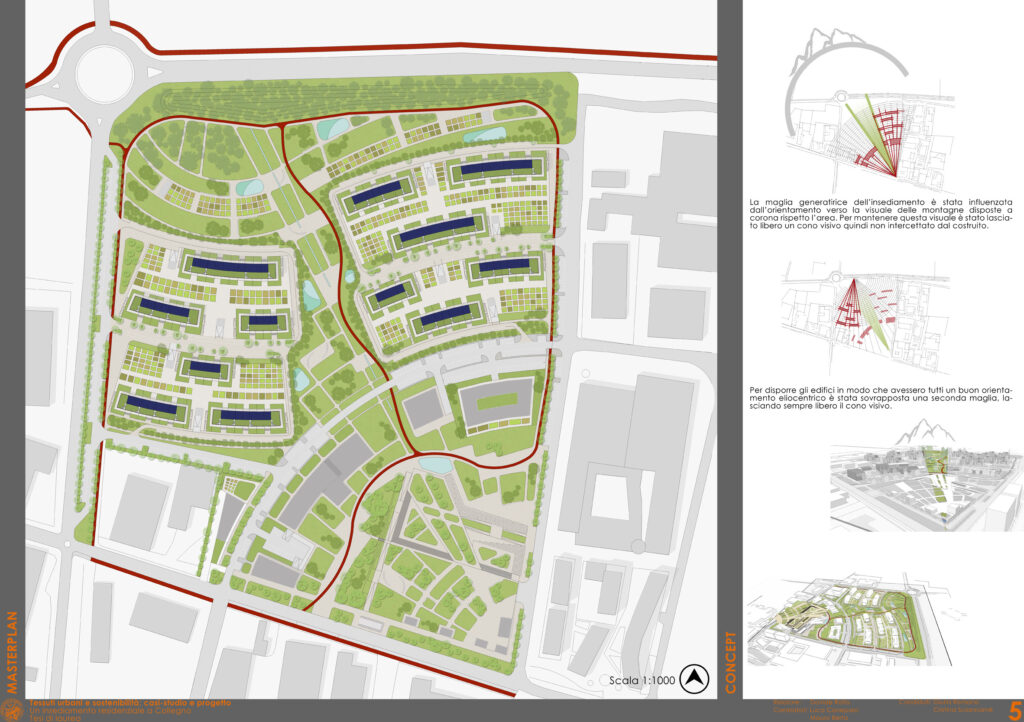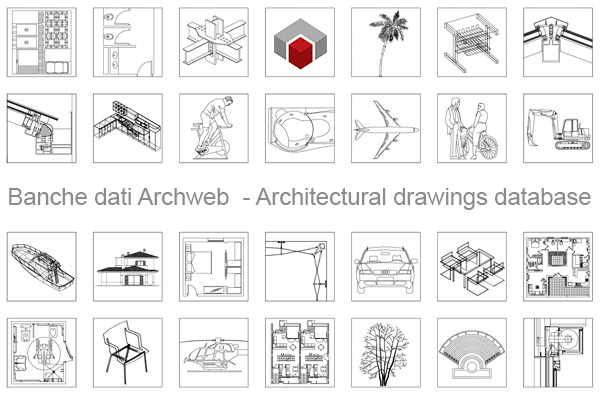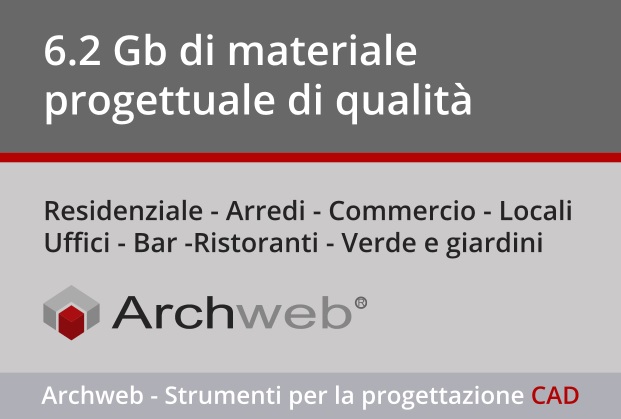Giulia Romano – Cristina Sciannamè
Degree thesis in Architectural Design
Urban fabrics and sustainability: case studies and design. A residential settlement in Collegno
Thesis by Giulia Romano and Cristina SciannamèE-mail: cristina.scianname@libero.it giulia_romano@outlook.com
Polytechnic of Turin - II Faculty of Architecture
Master of Science in Architecture for Sustainability
Speaker: Davide Rolfo
Co-rapporteurs: Mauro Berta and Luca Caneparo
A.A. 2012 - 2013
The theme of sustainability in architecture always arises with greater relevance but, just as its meaning is wide, its scope is also wide. We can talk about sustainability at various scales, because it comes into play both in building design and in territorial planning.
In this work we have chosen to deal with urban planning on a neighborhood scale, since it is interesting to observe the advantages generated by an entire sustainable urban system, not therefore conceived as the simple sum of the individual buildings but as a result of a general design oriented towards sustainability .
Some topics studied in urban ecology and sustainability have been studied, going through the environmental issue and sustainability in urban design practices. Finally, some fundamental elements of the evolution of sustainability in the residential fabric were considered.
Evaluation methods are becoming more and more critical analysis, verification and decision support tools. Based on the information collected, it has been found that the Italian framework on environmental quality assessment methods, in the residential building sector on a neighborhood scale, is not yet well defined; Nationally recognized criteria are still being defined.
The search for operational evaluation methods led to the knowledge of the LEED method and in particular to LEED for Neighborhood Development referred to the neighborhoods area, taken as a reference for the analysis of six case studies.
Using the study of urban residential fabrics, which present significant solutions in terms of quality and urban sustainability, and considering the reference categories, proposed by the LEED protocol, as guidelines for good design, the project of a residential neighborhood in With wood.
The project carried out is therefore based on three main themes such as the location and characteristics of the site, the interconnections and the design of the area, and the performance of the infrastructures and buildings as a whole. Specifically as regards the location, an urban void within the city was chosen as the project area. The second topic was dealt with through the themes of compact development, sustainable mobility and community spaces.
Finally, with regard to the last topic, we took into consideration the organization of urban green areas, efficient water management, attention to the orientation of buildings, the use of green roofs, the consideration of renewable energy and the appearance of reuse and recycling.
The final result is a drawing guided by the particularly significant aspects, concerning the environmental quality, found in the case studies previously analyzed and by the LEED evaluation method, obtaining positive results directed towards greater sustainability at the settlement level, and not focused only on the single building .
Giulia Romano – Cristina Sciannamè
Author
Category Giulia Romano - Cristina Sciannamè































































